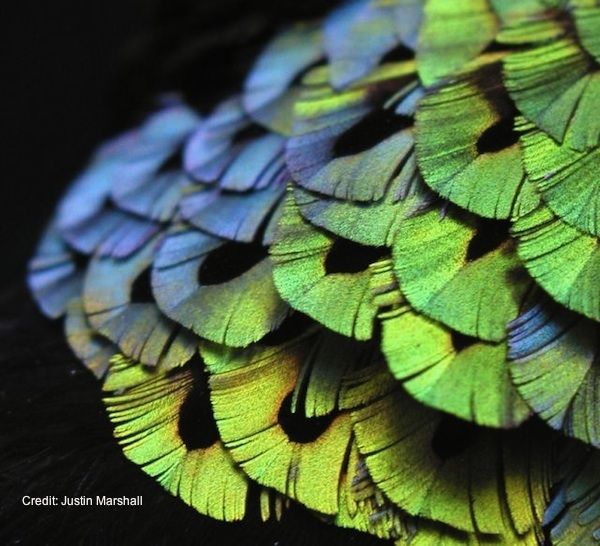Mirrorlike Feathers Give Bird of Paradise Its Shine


The rainbow-sheened feathers of the male bird of paradise are an eye-catching way to snag a mate. Now, a new study finds the birds owe their shimmer to feathers that reflect light like mirrors.
The Lawes's parotia, a species of bird of paradise, lives in Papua New Guinea. Males attract females with complex mating dances that consist of bobbing, bowing and gyrating. In the process, they shimmy their striking breast feathers, which look yellow-orange from the front, but shift to a shiny blue-green when viewed at an angle. [See Lawes's parotia's feathers]
The new study, published today in the journal Proceedings of the Royal Society B, finds that the feathers are able to shift so rapidly from yellow to blue and black because of the shape of microscopic structures called barbules. These tiny barbules line the barbs of a feather, just as the barbs line the main stem. If the main stem of a feather — the part that holds the ink in a quill — were a tree trunk, the barbules would be the smallest branches.
But by examining Lawes's parotia feathers with both light and electron microscopes, University of Sussex professor of neuroscience Daniel Osorio and his colleagues found that the birds' barbules aren't cylindrical like tree branches. Instead, if you were to slice a barbule like a loaf of bread, the resulting cross-section would be shaped like a boomerang.
That means the birds' feathers are like three-way mirrors in a department store dressing room, the researchers wrote. The center "mirror" reflects yellow-orange light, while the angled "mirrors" at the side reflect blue-green. That results in dramatic color changes that occur more quickly than in other iridescent feathers, according to the researchers. [See blue-green color shift]

No one knows how females perceive the males' feathery light show, but the structure of the feathers suggests males evolved to impress, Osorio and his colleagues found.
"The fact that the feather seems to be engineered for changes in the angle between the feather and the viewer to give much larger chromatic change than is usual for iridescent plumage suggests that hue change is important," the researchers wrote.
Sign up for the Live Science daily newsletter now
Get the world’s most fascinating discoveries delivered straight to your inbox.
You can follow LiveScience Senior Writer Stephanie Pappas on Twitter @sipappas

Stephanie Pappas is a contributing writer for Live Science, covering topics ranging from geoscience to archaeology to the human brain and behavior. She was previously a senior writer for Live Science but is now a freelancer based in Denver, Colorado, and regularly contributes to Scientific American and The Monitor, the monthly magazine of the American Psychological Association. Stephanie received a bachelor's degree in psychology from the University of South Carolina and a graduate certificate in science communication from the University of California, Santa Cruz.












